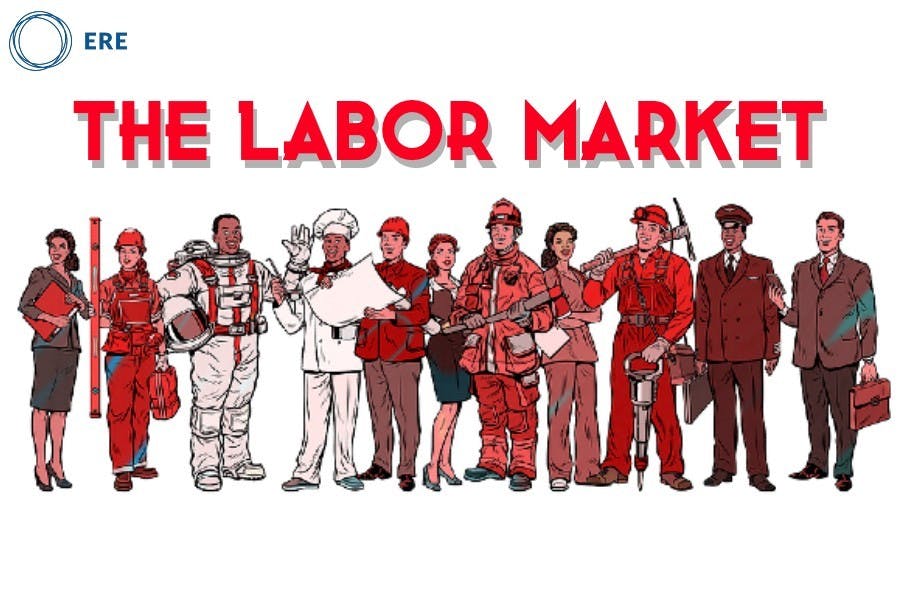Despite lower-than-expected job gains in November, there were plenty of other positive storylines for the labor market based on recent reports.
The U.S. economy added 210,000 jobs in November, down considerably from the 546,000 jobs added in October, but the number was not far off from Novembers of the past. These monthly numbers will start to moderate closer to historic norms as the labor market approaches a full recovery of jobs.
Indeed, from 2013 to 2019, the average monthly job gain in November was 206,000 and 0.14% growth — matching the growth rate from this November. In other words, while we would have loved to see even more jobs added, it was really a typical month of growth, and that’s not all bad.
The Labor Force Gets a Boost
Perhaps the best news is the labor force grew by 594,000 people in November, the biggest monthly gain in more than a year. Given how tight the labor force has become, it is great news for talent acquisition professionals and hiring managers.
Overall, though, there are still approximately 2.3 million fewer people in the labor force today compared to February 2020. Digging deeper, there are 175,000 more 35- to 44-year-olds in the labor market today than before the pandemic, but other age groups continue to show a deficit.
While the increase in the labor force is a major positive, the economy needs even more people to come off the sidelines. The national unemployment rate fell to 4.2% in November. Certain locations throughout the nation are seeing an even tighter squeeze for talent. In its recent report, the Bureau of Labor Statistics noted that Nebraska (1.8%), Utah (2.1%), Oklahoma (2.5%), Georgia (2.8%), and West Virginia (4.0%) are at their lowest unemployment rates since the statistic started being collected at the state level in 1976.
Even in Hot Markets, Businesses Struggle to Find and Retain Talent
In November, Texas achieved the milestone of recapturing all jobs lost to the pandemic, easily the largest state to hit that mark. In the same month, Dallas-Fort Worth also crossed that threshold of becoming the largest metropolitan area to recoup all lost jobs. Dallas is now one of 27 metros (of the 150 largest metros) to recover all jobs lost to the pandemic.
Still, hiring managers in Texas are struggling to retain employees. Of the 4.2 million people who voluntarily quit their job in the U.S. in October, 455,000 of them were in Texas. It was the highest level of quits ever recorded by any state and sustaining at that pace would be the equivalent of a 42% annualized turnover rate. The vast majority of those quitting their jobs are leaving for another one — just another example of the tightness of the current labor market.
Talent Acquisition in High Demand
Job openings in the U.S. approached the record set this summer, with more than 11 million jobs open in the latest reading. The challenge is there are fewer than 6.9 million unemployed people looking for work, not to mention the skills of available workers do not always meet the available positions.
In terms of industry news, the professional and business sector is on the doorstep of recovering all the jobs it lost. The industry lost almost 2.4 million jobs during the outset of the pandemic, but it has recaptured all but 69,000 of them. It is poised to be the second industry to recover all its lost jobs, after the financial activities sector accomplished that feat in October this year.
Outlook for 2022
The outlook for the labor market remains strong for 2022, but another rise in virus counts due to the omicron variant will almost certainly slow the pace in the near-term. However, looking back to earlier this year, job creation really saw a major boost in February and March, after the wave from the holiday season passed. Do not be surprised to see a similar trend to start 2022.
Currently, approximately 3.6 million jobs are projected to be added to the U.S. economy in 2022, and more locations and industries will hit the milestone of recapturing all the jobs lost during the spring of 2020.
Many of this year’s disruptors will carry into next year, whether it be dealing with spikes in virus counts or trying to fill open roles in one of the tightest labor markets on record. One challenge that employers would probably like to remain in 2021 is wage inflation, but expect another year of above-average growth in pay. Estimates for 2021’s pay growth range from 4% to 5%, and 2022 will likely still be on the lower end of that scale.
While wage growth at this level can certainly come as a shock to employers, the labor market is also playing catchup after years of wage stagnation. Given the current labor shortage, employers are finding that they need to raise pay and increase benefits to attract and retain talent.
Despite these challenges, there are many opportunities with a strong outlook for jobs next year. Talent acquisition professionals will be in high demand as businesses seek their help in filling open roles. Turnover is likely to remain near historic levels and talent acquisition will play a key role in backfilling open positions. There will certainly be bumps along the way in 2022, and patience will be key.
